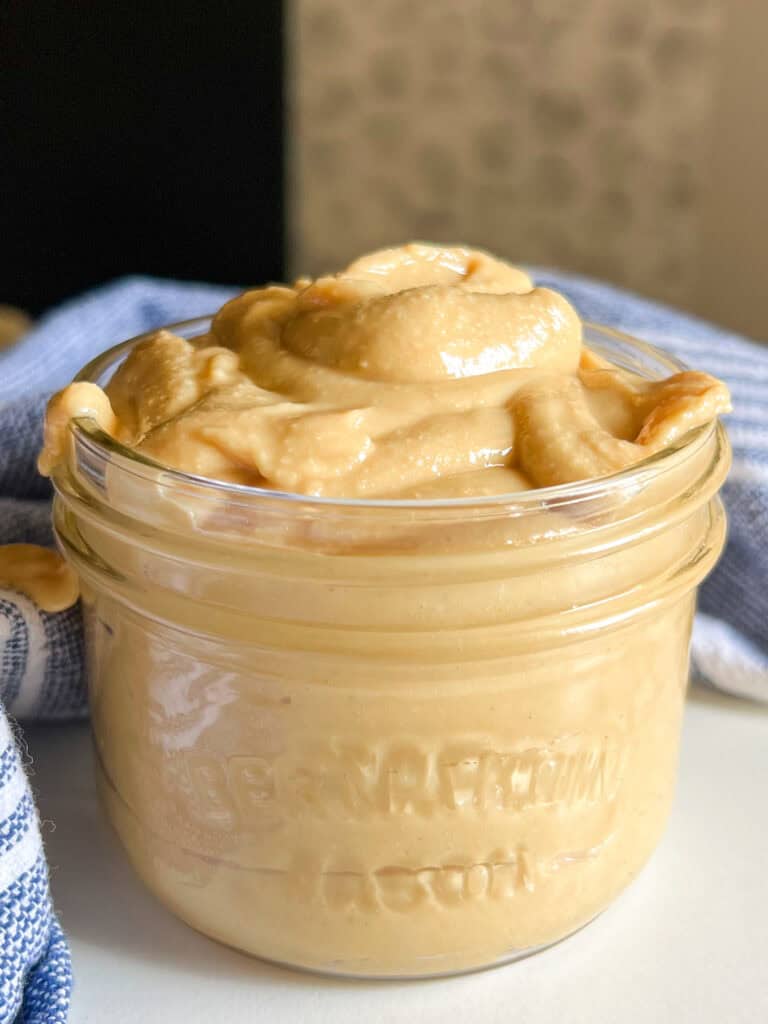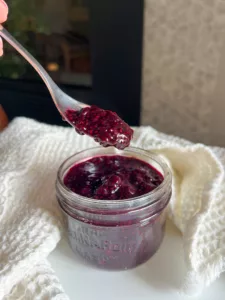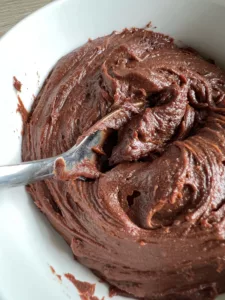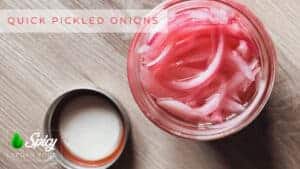Ever crave peanut butter so badly you wish you could just snap your fingers and have a jar magically appear? Well, here’s the next best thing: an easy homemade peanut butter recipe that takes just one ingredient and gives you full control over taste, texture, and quality.
Whether you like it smooth or chunky, this recipe has got you covered. Say goodbye to store-bought jars filled with added sugar and hello to creamy, dreamy nut butter you can proudly call your own.
Why Make Your Own Homemade Peanut Butter?
Let’s be real—natural peanut butter from the store can be pricey, overly oily, or packed with stuff you didn’t ask for. Making your own homemade peanut butter means:
- No added sugar or preservatives
- A pure nutty flavor from dry-roasted peanuts
- You get to tweak the taste to match your personal preference
- It’s super satisfying (like a mini kitchen victory)
The best part? It’s probably the easiest thing you’ll ever make in your kitchen!
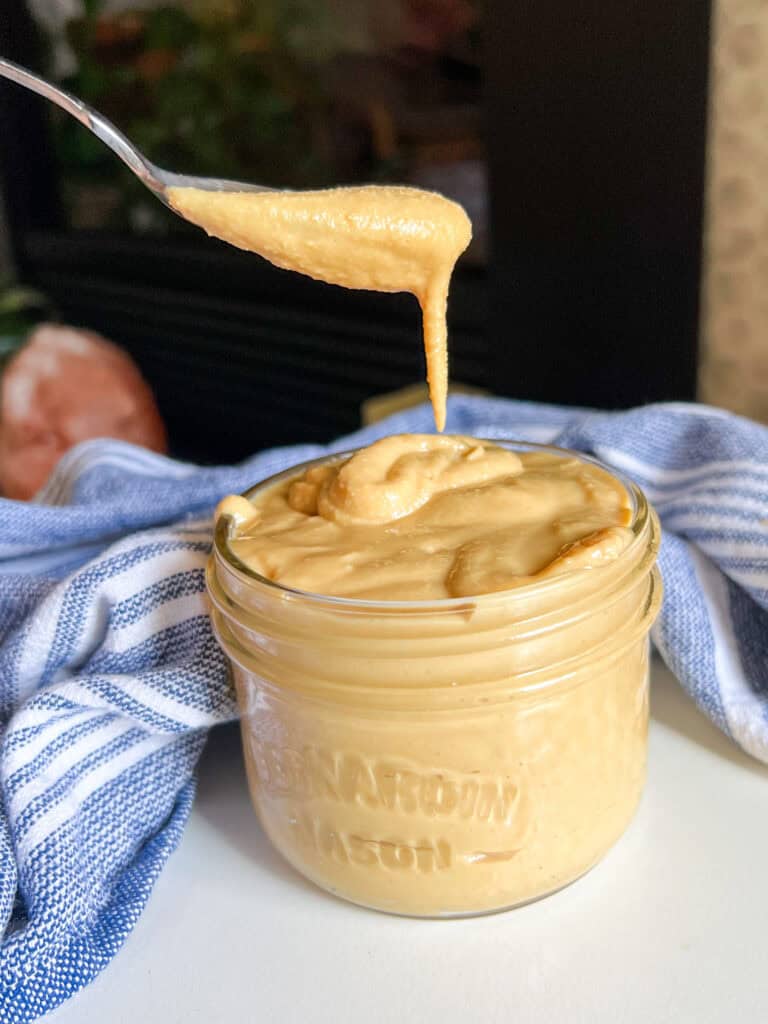
Ingredients & Substitutions
To keep things simple and pure, this easy peanut butter recipe requires just one star ingredient:
- Unsalted, roasted organic peanuts – These bring out that rich, nutty flavor without needing any added ingredients.
Optional Add-ins (if you want to level up):
- Peanut oil or any neutral oil – Helps make it smoother, especially in high-powered blenders.
- Pinch of salt – For flavor balance.
- Maple syrup, cinnamon, or honey – Great for sweet or spiced variations.
Substitution options:
- Raw peanuts (roast them first for deeper flavor)
- Almonds for almond butter
- Cashews for creamy cashew butter
- Walnuts for earthy walnut butter
Make your own version of any homemade nut butter you love!
Helpful Tools
Before you start, make sure you’ve got:
- High-powered blender or bowl of a food processor – This is crucial for a smooth nut butter.
- Rubber spatula – To scrape down the sides of the bowl as you go.
- Airtight container or small jar – To store your creamy creation.
- Baking sheet (if you’re roasting raw peanuts)
- Jars! Or Mason Jars
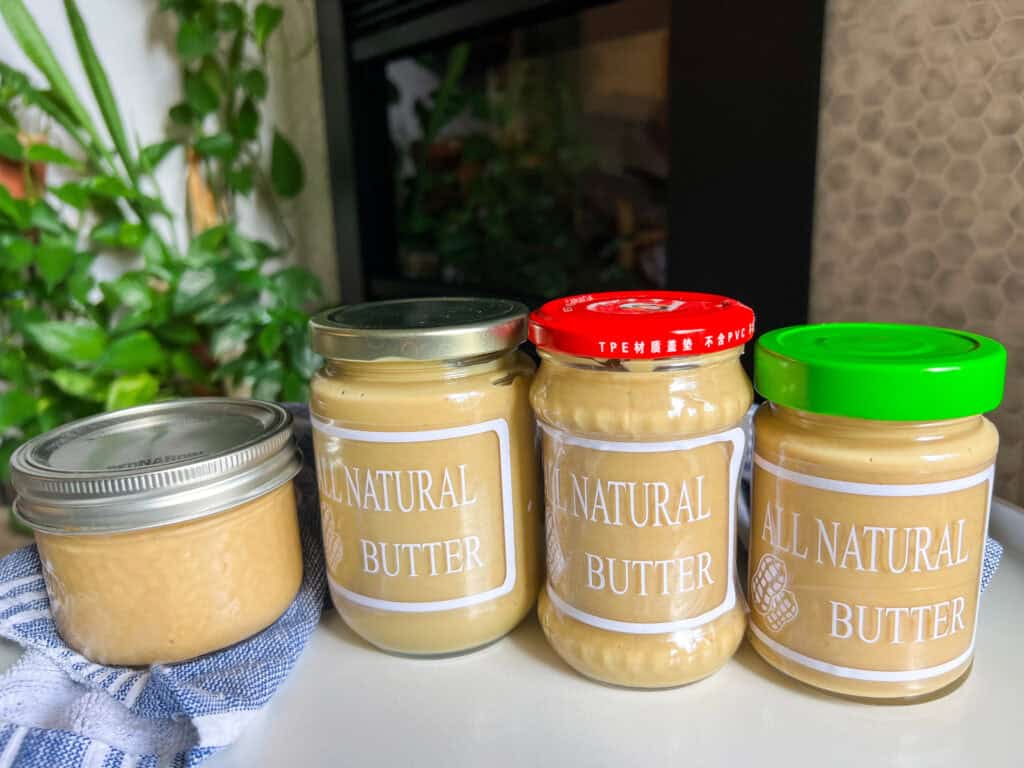
How to Make This Easy Homemade Peanut Butter
Step 1: Blend Peanuts
Toss your roasted peanuts into the food processor and blend. First, they’ll turn into a coarse meal. Keep going!
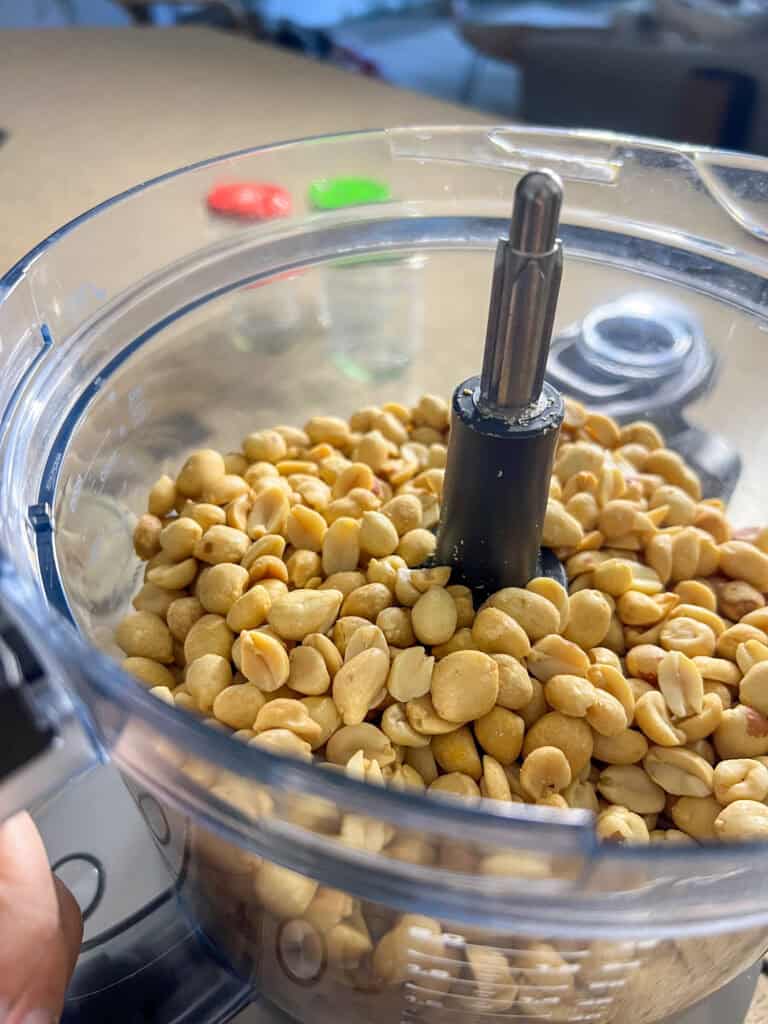
You’ll pass through various stages—first gritty, then doughy, then suddenly, that moment of magic:

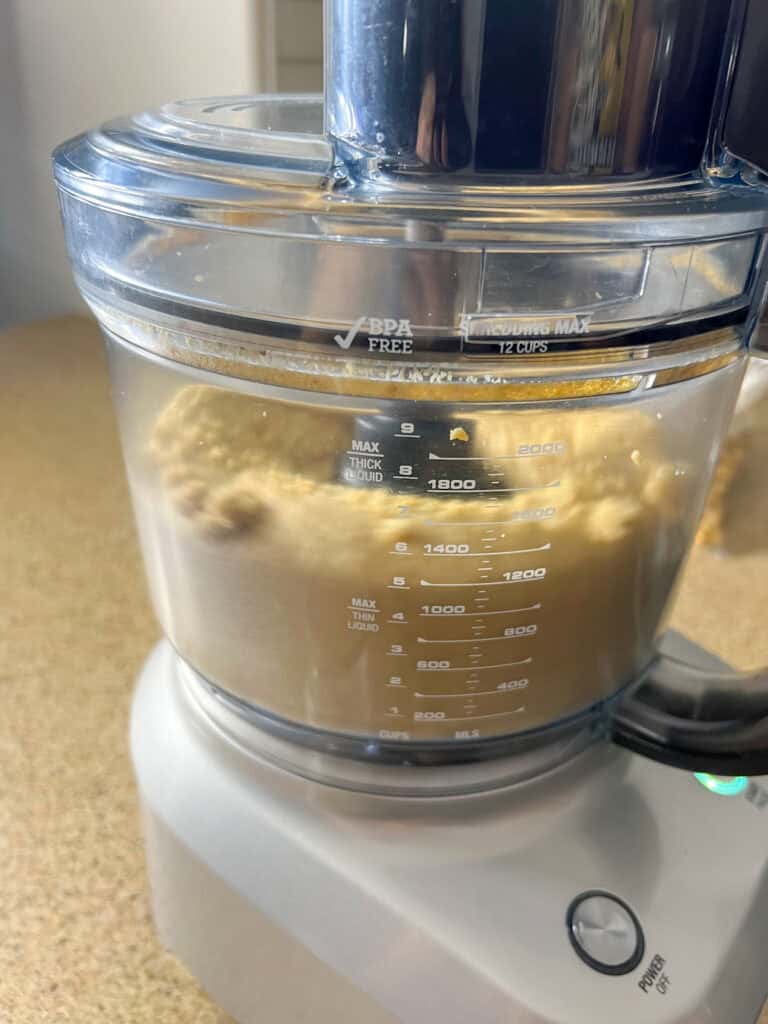
Smooth, silky peanut butter.
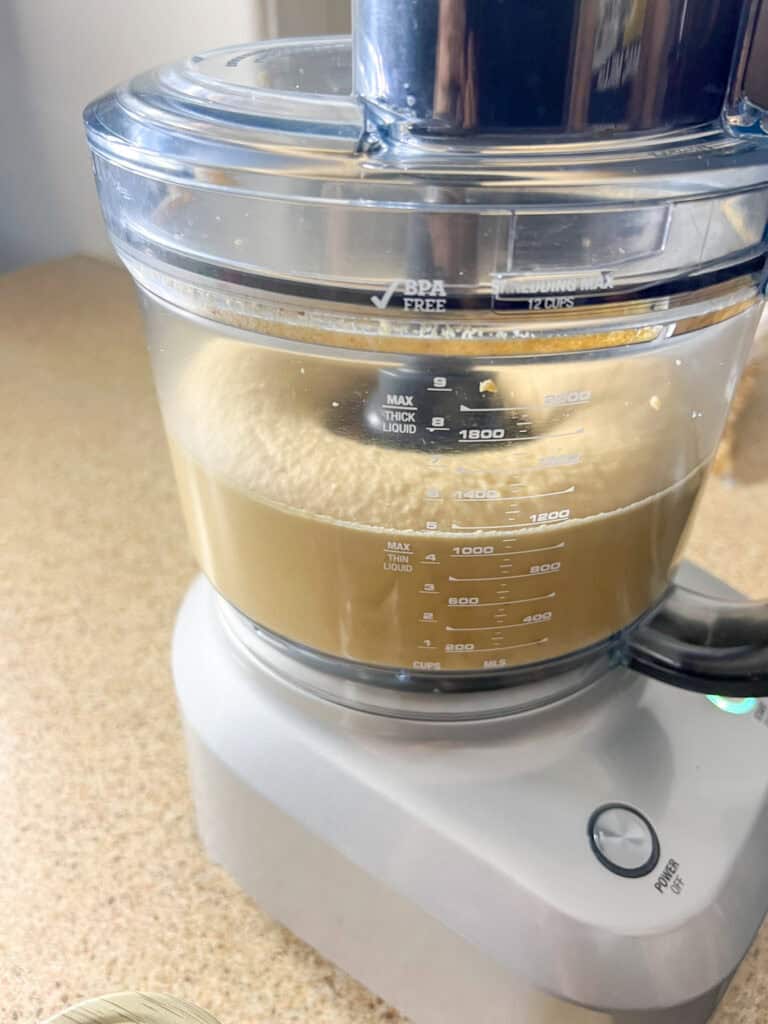
Scrape down the sides of the bowl to make sure everything blends evenly.
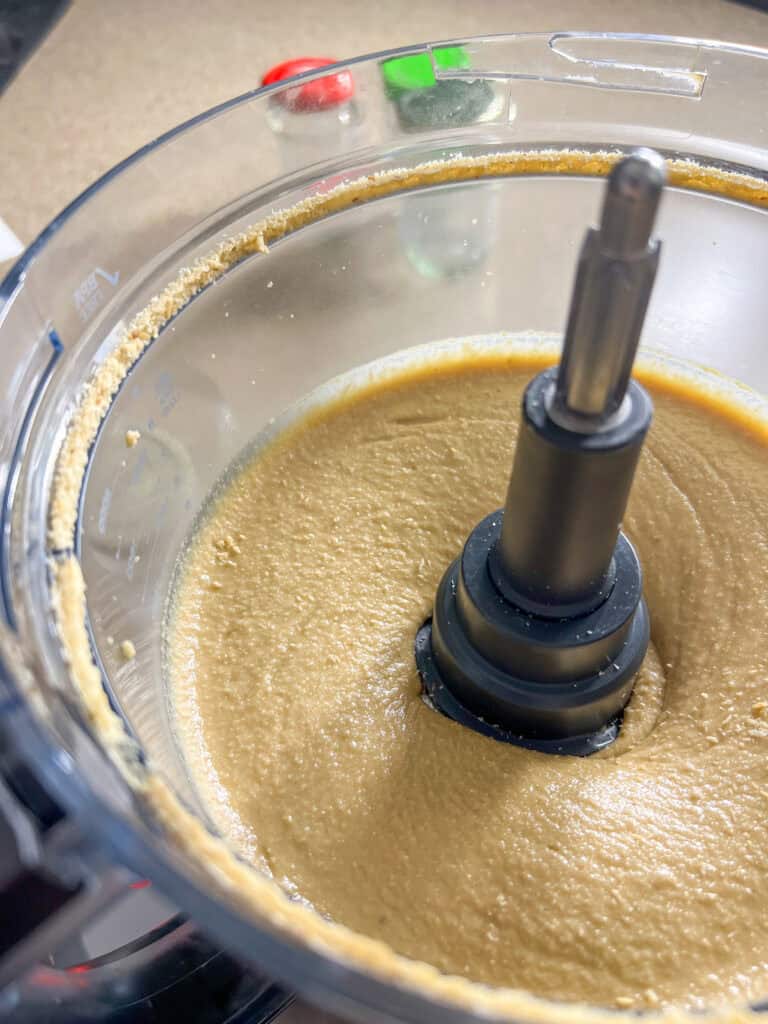
Step 2: Adjust and Flavor (Optional)
Too thick? Add a little peanut oil or neutral oil like coconut oil. Want a bit of sweetness or spice? Go for maple syrup, cinnamon, or even a little cocoa powder.
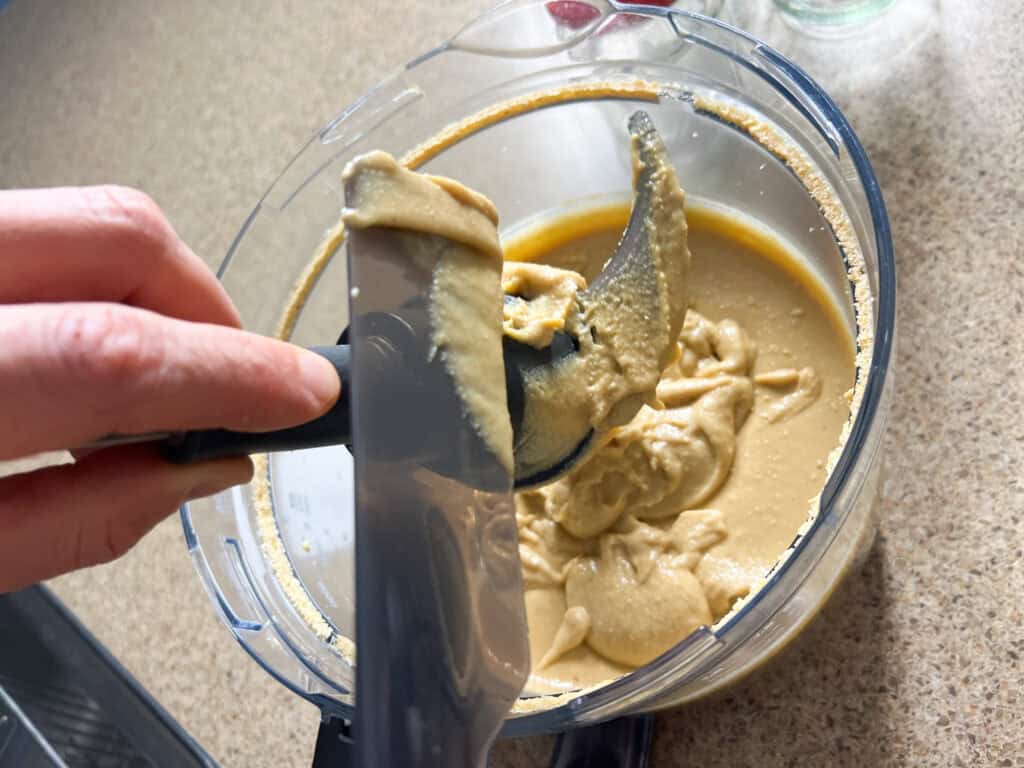
Don’t forget a pinch of salt if you’re after that classic peanut butter taste.
Step 3: Jar and Store
Spoon the final product into your airtight container or jar.
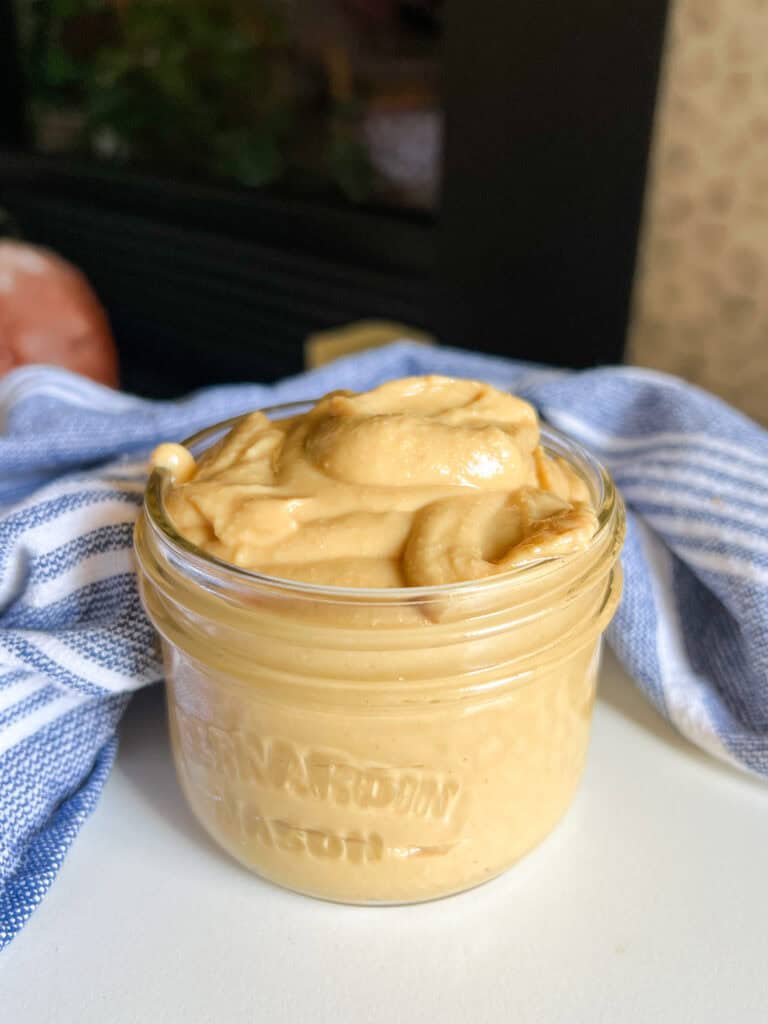
Let it cool to room temperature before sealing. Oil separation is totally normal—just stir before use!
Tips & Tricks
- Room temperature peanuts blend better than cold ones.
- Don’t add oil unless you really need it—peanuts release their own natural oils.
- Want chunky peanut butter? Save some chopped peanuts and stir them in at the end.
- Use dry-roasted peanuts for the most flavor.
- The size of your food processor may impact how much you can make at once—don’t overload it!
Homemade Peanut Butter Storage Tips
- Store in a cool, dry place or refrigerate if you want it to last longer.
- Use a small jar to keep portions fresh.
- Stir well if separation occurs. That’s just the oils doing their thing.
This peanut butter should last several weeks, especially in the fridge.
Texture Guide: Chunky vs Creamy Peanut Butter
Chunky Peanut Butter:
- Add reserved whole peanuts or chopped peanuts after blending.
Creamy Peanut Butter:
- Blend longer until the smooth consistency makes you swoon.
- Add a little oil for that drippy peanut butter texture.

Nutritional Benefits
This is not just a spread—it’s a protein-packed powerhouse.
- Rich in healthy fats
- Loaded with plant-based protein
- Great option for vegan diets and anyone looking for natural kind of energy
Common Mistakes to Avoid
- Using raw nuts without roasting—flavor will fall flat
- Not using enough peanuts—you’ll just get dust
- Adding too much oil or extra oils—can lead to a greasy mess
- Not blending long enough—wait for that magical creamy texture
Flavor Variations
Mix things up with these fun twists:
- Maple Cinnamon: Add a dash of both for cozy, fall vibes
- Spicy Peanut Butter: A pinch of chili flakes or cayenne
- Chocolate Peanut Butter: Stir in a teaspoon of cocoa powder
- Sea Salt Crunch: Add sea salt and stir in crunchy bits
Using Your Homemade Peanut Butter
Here’s how to enjoy your creamy homemade peanut butter:
- Spread on toast with banana
- Stir into morning oatmeal or overnight oats
- Bake into peanut butter cookies
- Add to smoothies or sauces
- Eat straight from the jar (we won’t judge)
Sustainability and Cost Savings
Making your own saves money in the long run, especially if you buy cups of peanuts in bulk. Plus, fewer jars and less waste = a happier planet.
Peanut Butter FAQs
Preparation tips:
- Raw peanuts work but roast first
- 350°F for 15-20 minutes
- Cool before blending
Storage guidelines:
- Pantry: 2-3 weeks
- Fridge: 3-6 months
- Airtight containers essential
Natural occurrence:
- Stir before use
- No emulsifiers added
- Store upside down initially
Alternative nut butters:
- Almonds (roast first)
- Cashews (creamiest)
- Hazelnuts (add chocolate!)
Smoothness solutions:
- Blend 8-10 minutes
- Use high-powered blender
- Add 1 tbsp neutral oil

Homemade Peanut Butter
Ingredients
- 8 Cups Unsalted, roasted peanuts *see notes for optional extras
Instructions
Blend Peanuts
- Add roasted peanuts to a food processor and blend until they break down into a meal. Continue blending until creamy, scraping down the sides as needed. Depending on your food processor, this may take a few rounds or it may happen very quickly. Just keep an eye on the consistency.
Adjust and Flavor (Optional)
- If needed, add a teaspoon of nut oil smoother blending. Add a pinch of salt or other flavorings (honey, cinnamon, etc.) if desired, and blend until combined.
Jar and Store
- Transfer the finished peanut butter into clean, airtight jars. Store in a cool, dry place. Stir before using if there's any oil separation. Enjoy!
Notes
Nutrition
Conclusion: Homemade Peanut Butter
You really don’t need a fancy kitchen or special ingredients to make the best peanut butter ever. Just one simple ingredient, a trusty blender, and a little patience—that’s it!
Once you try this easy homemade peanut butter recipe, you’ll never go back to the store-bought brand of peanut butter again. Whether you like it smooth, chunky, sweet, or salty, the final creation will always be your own homemade peanut butter, made exactly the way you like it.

